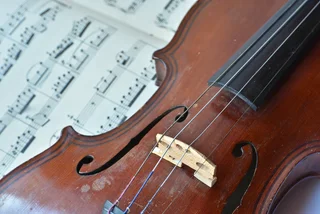The road from Hodslavice in Nový Jičín District to New York may be long, but the talent and ambition of Matěj Číp, who hails from the Czech village, makes it achievable. The 26-year-old cimbalom player received a scholarship to the Berklee School of Music for his master’s degree studies and is looking for a way to finance his studies.
So far, he raised CZK 45,890 out of a total of CZK 550,000 through his fundraising page which has 38 contributors. Each donation comes with rewards that range from handwritten postcards from New York and honey made by Číp’s brother to a tailor-made cimbalom lesson from Číp, or even a road trip across the U.S. with the cimbalom player.
What makes Číp’s endeavor worthy of support?
Číp told Czech Radio that he fell in love with the cimbalom on his grandmother’s birthday, and, since his brother shared his passion, the living room of their family soon had a cimbalom instead of a couch. After graduating from the Janáček Conservatory in Ostrava, Číp enrolled in the undergraduate program of the Northern State University in Aberdeen, South Dakota, which he also graduated from. He was the first and only Czech to study the cimbalom at a university in the U.S. He also studied at the Central Conservatory of Music in Beijing.
In the Q&A session of his fundraiser, Číp said that, while he would be happy to continue his studies in the Czech Republic, the kind of programs that he is looking for are currently not available. Additionally, the cimbalom is an intrinsic part of Czech culture, yet virtually unknown outside the Central European region, despite its limitless potential.
He added that, although the instrument is also not well-known in the U.S. music academia, his master’s at Berklee would allow him to work with “leading professors of various instruments to gain feedback and bring new perspectives to the cimbalom field.”
"The dulcimer has the potential to rival the piano, violin, and other instruments of a classical orchestra. It is so sonically rich and diverse that it can handle both classical and contemporary music," Číp told iDnes.
Fast facts about the cimbalom
- The cimbalom is a type of dulcimer composed of a large, trapezoidal box with metal strings stretched across its top.
- The first representation of a percussion instrument resembling the cimbalom was the Assyrian bas-relief in Kyindjuk dating back to 3500 BC.
- A staple of traditional Roma music across the Austro-Hungarian Empire, the instrument is still popular in folk ensembles in Central and Eastern Europe.
- Cimbalom is the national musical instrument of Hungary, where it is also used to play classical music.
- The creator of the concert cimbalom in the 19th century was Václav Josef Schunda, born in Dubeč u Říčan in the present-day Czech Republic.
- Sources: Cimbalom.ca and Cimbalom.by












 Reading time: 2 minutes
Reading time: 2 minutes 

























